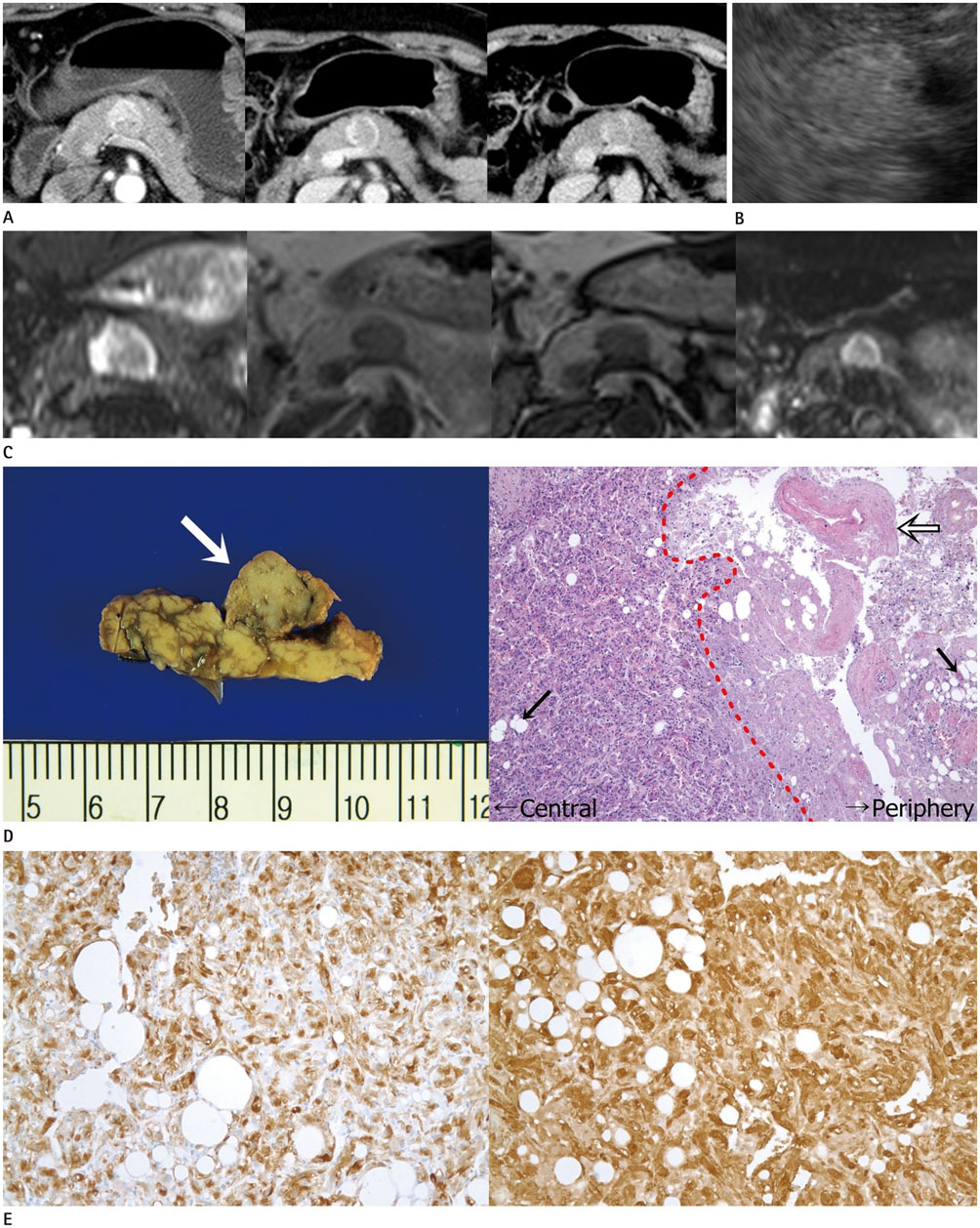J Korean Soc Radiol.
2017 Jul;77(1):9-13. 10.3348/jksr.2017.77.1.9.
Imaging Findings of Primary Angiomyolipoma of the Pancreas: A Case Report
- Affiliations
-
- 1Department of Radiology, Korea Cancer Center Hospital, Korea Institute of Radiological and Medical Sciences, Seoul, Korea. lcf0666@hanmail.net
- KMID: 2384729
- DOI: http://doi.org/10.3348/jksr.2017.77.1.9
Abstract
- Angiomyolipoma (AML), a part of a family of mesenchymal tumors, is a common fat-containing solid neoplasm. Kidney and liver are the main sites of AML; rarely, primary pancreatic AML has also been reported. Here, we present a case of pathologically proven primary pancreatic AML in a middle-aged female patient, based on multidetector computed tomography scan, endoscopic ultrasound, positron emission tomography, and magnetic resonance imaging findings.
MeSH Terms
Figure
Reference
-
1. Ferrozzi F, Zuccoli G, Bova D, Calculli L. Mesenchymal tumors of the pancreas: CT findings. J Comput Assist Tomogr. 2000; 24:622–627.2. Kim JY, Song JS, Park H, Byun JH, Song KB, Kim KP, et al. Primary mesenchymal tumors of the pancreas: single-center experience over 16 years. Pancreas. 2014; 43:959–968.3. Heywood G, Smyrk TC, Donohue JH. Primary angiomyolipoma of the pancreas. Pancreas. 2004; 28:443–445.4. Bhardwaj N, Garcea G, Lloyd D. A rare case of multi-focal angiomyolipoma affecting the pancreas and liver. J Surg Case Rep. 2012; 2012:5.5. Gleeson FC, de la Mora Levy JG, Zhang L, Levy MJ. The differential broadens. EUS FNA appearance and cytological findings of pancreatic angiomyolipoma. JOP. 2008; 9:67–70.6. Kim JK, Park SY, Shon JH, Cho KS. Angiomyolipoma with minimal fat: differentiation from renal cell carcinoma at biphasic helical CT. Radiology. 2004; 230:677–684.7. Israel GM, Hindman N, Hecht E, Krinsky G. The use of opposed-phase chemical shift MRI in the diagnosis of renal angiomyolipomas. AJR Am J Roentgenol. 2005; 184:1868–1872.8. Katabathina VS, Vikram R, Nagar AM, Tamboli P, Menias CO, Prasad SR. Mesenchymal neoplasms of the kidney in adults: imaging spectrum with radiologic-pathologic correlation. Radiographics. 2010; 30:1525–1540.9. Prasad SR, Wang H, Rosas H, Menias CO, Narra VR, Middleton WD, et al. Fat-containing lesions of the liver: radiologic-pathologic correlation. Radiographics. 2005; 25:321–331.10. Anderson SW, Kruskal JB, Kane RA. Benign hepatic tumors and iatrogenic pseudotumors. Radiographics. 2009; 29:211–229.


